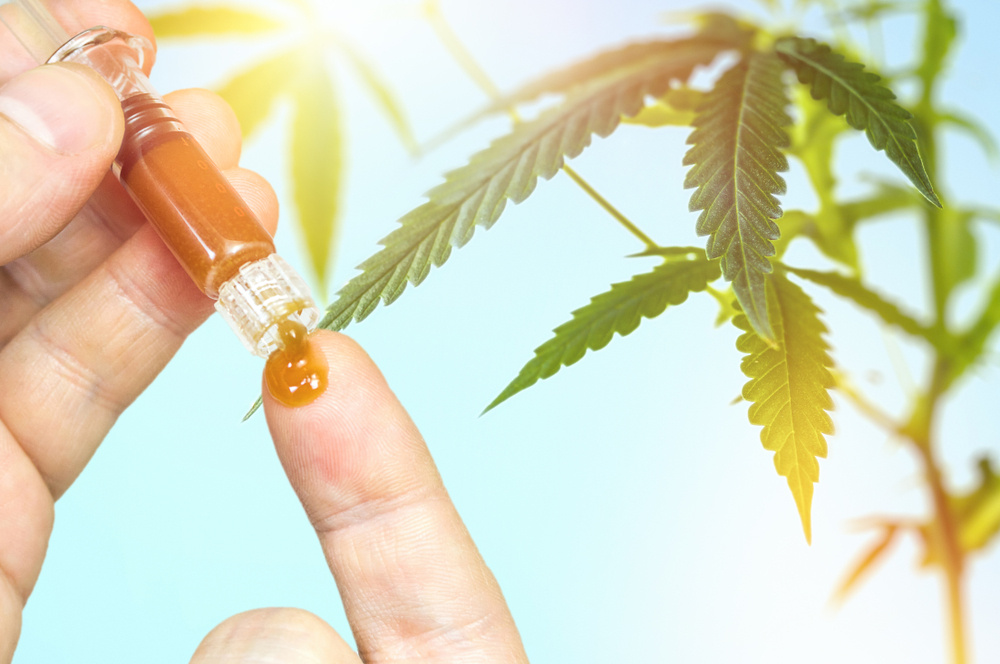CBD and cannabis: what is the endocannabinoid system and how does it work?
If you have ever read anything about the effects of CBD and cannabis, you have probably come across that they influence the endocannabinoid system. The task of this system is to maintain the natural balance of the body. It influences all kinds of processes. But what exactly is it, and how does it work? We will go into this in more detail in this blog.
The properties of the endocannabinoid system
All kinds of important processes take place in the body. Think of blood pressure, the immune system, digestion, your emotions and the processing of pain stimuli. All these processes must continue to run smoothly. It is the job of the endocannabinoid system to ensure this. This system runs throughout the body and adjusts these processes if necessary.
The ECS consists of a network of receptors and adjusts neurotransmitters to work harder or reduce activities. It does this through endocannabinoids, substances that the body produces itself. Two are now known, anandamide (also called the happiness molecule) and 2-AG (2-arachidonoylglycerol). There are probably more, but not much is known about them yet. These endocannabinoids can bind to receptors, through which they can transmit messages to the cells. These are the CB1 and CB2 receptors, which are located in the central nervous system, the brain and the immune system.
The ECS was only discovered in the late 1980s, and it is still not entirely clear how exactly it works. But it plays a role in various processes in the body, including:
- Processing pain stimuli
- Inflammatory reactions
- Stress
- The immune system
- Sleep-wake rhythm
- Blood pressure
- Memory
- Emotions
The task of the ECS is to maintain homeostasis, balance. If processes are disrupted, the ECS sends signals to ensure that the balance is restored. This system is therefore really indispensable in the body.

The function of cannabinoids
As mentioned, the ECS requires cannabinoids to function. When the levels of the body's own cannabinoids are too low, the ECS cannot transmit messages to the cells. Fortunately, there are phytocannabinoids, which come from plants such as cannabis. These are recognized by the body because their structure is very similar to the substances it produces itself. When you weed used or CBD oil as a supplement, these cannabinoids will be able to work with the ECS.
Influence of CBD on the endocannabinoid system
CBD has become one of the most popular supplements in recent years. This cannabinoid is available in different forms, such as capsules, oil, paste and crystals. Each of these forms contains a certain amount of CBD, which after ingestion can influence your body via the ECS. Off research shows that CBD has potential anti-inflammatory properties.
THC
THC is the other known substance derived from the cannabis plant. THC, unlike CBD, is intoxicating and therefore causes a high. But THC has many more effects, which is why many people use it for its medicinal properties.
THC also has analgesic properties and can help with pain and muscle cramps. There are even people with chronic (nerve) pain who benefit greatly from the use of medicinal cannabis. THC has a positive effect on digestion and can be used for complaints such as nausea and reduced appetite. Furthermore, THC also has anti-inflammatory properties and has a soothing effect on stress.
When it comes to anxiety, the effects of THC are not the same for everyone. Some people find that their anxiety diminishes, but this cannabinoid can also induce paranoia. It is therefore certainly wise to proceed with caution if you want to use cannabis for anxiety. Furthermore, THC affects your sleep and mood, depending on the dose.
Other substances that influence the ECS
Cannabis and full spectrum CBD products contain even more substances that influence the endocannabinoid system. Cannabis contains more than 120 different cannabinoids, such as CBN, CBG and CBC. All these substances can bind to receptors and also work synergistically with each other.
Other substances that can influence the ECS are terpenes and flavonoids. Terpenes are the substances that give cannabis its characteristic taste and smell. An example of this is myrcene. This substance can enhance the effects of THC. Limonene can stimulate the immune system and has antidepressant properties. Humulene, a terpene that has an odor comparable to hops, may help slow down cancer, according to research.







